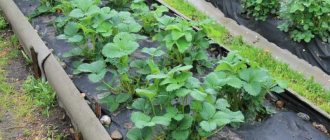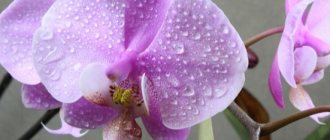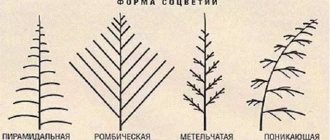Common privet: description, features of planting and care
Common, or ligustrum (L.vulgáre), is a deciduous shrub or tree up to five meters high with opposite, simple, spear-shaped and leathery foliage. Many people know the species under the names Yellow-leaved or aurea. The upper part of the foliage has a dark green color. The lower part of the foliage is lighter and pointed.
The white flowers have a characteristic aroma and are collected in panicle inflorescences that bloom closer to mid-summer. The round fruits in the form of shiny berries are poisonous and filled with seeds. This most winter-hardy species is most often grown in the soil and climatic conditions of the central zone of our country. Mature plants make a very beautiful and original hedge.
The most popular varieties:
- "Aureum" or aureum, up to one and a half meters high with green leaf blades. There is a pronounced golden border on the leaves. It is characterized by winter hardiness, but needs to be grown in sunny areas;
- the low-growing “Glaucum”, up to a meter high, has a spreading crown, fairly narrow foliage with a bluish bloom and a white border;
- the semi-evergreen shrub variety "Vicari" has a dense crown no more than a meter high and wide, oval, golden-yellow foliage;
- variety "Pyramidale" with an attractive above-ground part of a pyramidal shape No.
- medium-sized variety "Pendulum " with a weeping crown shape;
- highly decorative variety "Glaucum" with bluish foliage, characterized by a white border.
All varieties are unpretentious and do not require shelter for the winter.
Diseases and pests
Privet is a fairly disease and pest resistant shrub. Dangerous fungi include:
- powdery mildew - the disease leaves a whitish-gray coating on the leaves of privet, similar to mold, and if left untreated, leads to the death of the bush;
Powdery mildew appears on acidified soil - leaf spotting - uneven brown and black spots appear on the plates, over time they dry out from the inside and turn into holes.
Privet spotting develops against the background of waterlogging and exposure to pests
To treat garden shrubs, copper sulfate, Bordeaux mixture and the drug Fundazol are used. Spraying is carried out according to the instructions several times a season, and the already affected parts of the plant must be removed. Fungal diseases can be prevented by regular liming of the soil with dolomite flour or fluff.
Among the pests that are dangerous for privet are:
- spider mite - the pest entangles leaves and shoots, impairs the process of photosynthesis of the plant and also feeds on its juices;
Spider mites appear most often during dry periods - thrips - insects settle on the underside of leaves, the first symptoms of infection are stripes and streaks on the plates, as well as colorless and yellow spots;
Thrips feed on privet juices and lead to deformation of leaves and shoots - aphids - microscopic insects reproduce in large colonies and can densely cling to the leaves of a bush;
Aphids occur especially often on young privet and indoor species. - Scale insects are small parasites with a hard shell that settle on the shoots of ligustrum and on the underside of its leaves.
Scale insects often appear during dry periods in the absence of watering
The fight against harmful insects is carried out using the preparations Fitoverm and Actellik. During the season, you need to perform about four treatments at intervals of two weeks.
Photo gallery
Privet variegated
Variegated (L.variegata) is one of the varieties of Chinese privet, with long, pointed leaves. The color of the crown is dark green, with original golden fields. In autumn, whitish, relatively numerous flowers are formed. After flowering, fruits are formed, inside of which there are numerous seeds. The ornamental shrub is quite unpretentious to grow , but does not tolerate too low temperatures.
Landing
Common privet loves windless and well-lit places, although it will grow in partial shade. There are no special criteria for the soil, but it develops well on medium-fertile soils with a neutral or slightly alkaline reaction and poorly on sandy soils. In acidic soils, leaves may take on an unnatural color. If plantain or horsetail grow on the site, then most likely the soil has high acidity. You can deoxidize it with slaked lime or chalk. The area for a single shrub should be spacious, at least 1 m from the nearest large plant or structure. Planting is carried out in spring or autumn.
Planting stages
- Dig the soil to the depth of a spade bayonet.
- Dig a planting hole, the dimensions of which should be 2-3 times larger than the size of the root system. The optimal parameters are 60x60 cm and a depth of 60-70 cm.
- Place a drainage layer on the bottom.
- Add soil mixture to the drainage with the addition of complex mineral fertilizers (nitrogen-phosphorus-potassium).
- Position the seedling so that the root collar is not too deep. Spread out the roots.
- Sprinkle with soil, compact gently and water well.
- Mulch the tree trunk circle with a 5-centimeter layer of non-acidic tophra, shavings or bark to retain moisture and control weeds.
To obtain a hedge, 3-5 year old plants are planted in a trench 50 cm wide and up to 70 cm deep. The distance between the bushes is about 30-50 cm.
Privet shiny
Brilliant (L.lucidum) grows under natural conditions in China and Japan. The name is due to the formation of glossy and very decorative foliage. The aboveground part of a large shrub or low tree reaches several meters in height.
The foliage is fairly large, elongated, ovate, and characterized by a smooth and glossy surface. The flowers are small, whitish in color, collected in relatively loose inflorescences-panicles up to 16-18 cm long. Flowering is long-lasting. In regions with very unfavorable climatic conditions, winter shelter is used.
Description of the bush
There are more than 50 species in the genus Ligustrum ; they can be found in nature in Asia, Europe, North Africa, Japan and Australia.
Ligustrum blooms in June, at which point the bush is densely dotted with paniculate rather large inflorescences, consisting of many small white flowers.
Interesting! The pleasant sweetish aroma of privet complements its decorative qualities.
Ligustrum is easy to shape, thanks to which gardeners give it the most intricate shapes. Thus, in decorative hedges there is a columnar form of the plant .
| Characteristics | Description |
| Bloom | Long-term, starts in June |
| Height | The size of the plant depends on the species characteristics. Thus, dwarf varieties do not exceed 1 meter, medium-sized bushes can reach 3 meters without pruning, and tree-like plants reach up to 6 meters in height |
| Poisonous or not | Privet fruits are poisonous to both humans and animals. |
| Vegetation speed | Ligustrum is a fast-growing plant. |
| Endurance | The bush is highly adaptable and adapts well to a wide variety of living conditions. |
Japanese privet
Japanese (L.jaronicum) is similar to shiny privet. It is characterized by a height of the above-ground part of up to four meters and a very well-developed crown. It is a more shade-tolerant, but relatively capricious variety in terms of site selection and irrigation activities.
Planting and subsequent care of such a plant is not difficult. The popular low-growing variety “Rotundifolium”, up to one and a half meters high, is distinguished by rounded, highly decorative foliage.
Summary
Few people have seen or known photographs and descriptive characteristics of privet, because the popular name of this shrub is “Wolf Berries.” But in fact, the bush is an amazingly beautiful plant that can decorate any area. The shrub is used to create bonsai; in Japan, the crop is used to make ikebana. In European countries, in a large number of areas, shrubs are used to form fences and hedges. However, privet is also often found alone. The plant is easy to trim, it grows quickly, is easy to care for, and is immune to most diseases. That is why privet has become more and more fans over the years.
Privet oval-leaved
Oval-leaved or Californian (L.ovalifolium) refers to evergreen low-growing trees up to a meter high. Flowering is irregular, so the species is more valued for its decorative foliage. The flowers have a very characteristic unpleasant odor. Winter hardiness indicators are very low, so covering the above-ground part is used to protect against frost.
Diseases and harmful insects
The privet bush belongs to that vegetation that is immune to almost all diseases. Dangerous diseases can be considered: powdery mildew, grayish or dark green spotting. As a rule, if a plant becomes ill with these ailments, this means that the acidity of the soil is increased. The crop can be treated in a timely manner with specialized means, and the affected shoots can be cut off.
Harmful insects that often appear on privet: aphids, thrips, spider mites, scale insects.
To prevent attacks by these creatures, it is necessary to treat the tree with pest control complexes 2 times a year.
Other types and varieties of privet
Gardeners are well aware of the description of other popular varieties and species:
- variation of the Japanese species - golden privet. The species is characterized by a high rate of growth and development, as well as the ability to form living sculptural compositions and hedges. The foliage is smooth and oval, with a green center and bright golden edges. The flowers are tubular, small, whitish;
- Quihou (L.quihoui) Youngling is a medium-growing shrub with a height of the above-ground part of no more than a couple of meters. Not too abundant flowering occurs in mid-summer and stops after a couple of weeks with the formation of seeds;
- evergreen privet Ibota (L.ibоta) is a deciduous light-loving shrub that blooms in mid-summer and forms fruits in the first ten days of autumn. Characterized by low winter hardiness and demanding favorable soil conditions;
- Iezskaya (L.yezоense) is a shade-tolerant and fairly winter-hardy shrubby ornamental perennial with small and hard leaves. Flowering occurs in the last ten days of summer;
- dense (L. compastum) is a semi-evergreen and medium-growing shrubby non-flowering plant with insufficiently high frost resistance.
General requirements - soil, humidity, lighting
How quickly privet grows and develops depends on compliance with the requirements for composition, soil moisture, and the level of natural light in the area. Gardeners and landscape designers know that the plant is unpretentious; it is enough to provide it with good watering in the first weeks after planting, feed it during the formation of the crown, prune it and clear the bush of dead branches.
Soil composition
Privet is unpretentious, but in clayey, dense soil that is prone to forming a crust on the surface it will not develop well. Acidic soil with a high sand content is not suitable for this species. The best option is a slightly alkaline or neutral soil composition.
The composition of the soil in the area where privet will be planted can be optimized and improved by adding the missing substances, mineral and organic fertilizers, for example, lime, humus.
Lighting
Requirements for the intensity of natural light depend on the variety and type of privet. Some of them easily tolerate constant shading, while some simply need sunlight for the formation of a crown, a rich shade of foliage, and active flowering.
Related article:
What are the names of shrubs that bloom with white flowers?
In shaded areas, it is recommended to plant varieties with green leaves, without golden spots or borders along the edges. Those species that are characterized by variegated, yellow foliage or abundant inclusions are suitable for well-lit areas.
Site humidity
This type of plant needs the natural moisture contained in the soil. Regular watering is necessary only for young bushes or trees during the first month after planting. In addition, the trench with privet bushes is watered abundantly during feeding.
Features of planting and pruning privet for hedges
A perennial ornamental shrub plant grows and develops very well not only in sunny areas, but also in the presence of slight shading. Almost any garden soil is suitable for growing , but the soil should not be too acidic or waterlogged, with severe stagnation of moisture.
Most often, many types of garden privet are used in solitaire plantings, suitable for topiary. The unpretentious culture looks very impressive in group or border plantings, as well as when creating hedges. Many gardeners and landscape designers use shrub plants to decorate outbuildings and fences.
Hedges made of privet look very impressive , but it is best to plant the most frost-resistant species and varieties for this purpose. The least winter-hardy and most unpretentious varieties should be used for group plantings with other types of shrubby perennials.
To form a full-length hedge, pruning is necessary. Such an important event is carried out in several stages. In the spring, mandatory sanitary pruning is carried out , during which all branches that are broken or severely damaged by winter frosts are removed. Formative pruning of the dense crown is carried out a little later, immediately after the perennial ornamental shrub enters the active growth phase.
Privet "Aureum" - nature's gold reserves
Privet oval-leaved 'Golden-edged' (Ligustrum ovalifolium 'Aureum')
I'll start with the background
The distant 15th year.
My plot was a former vineyard plowed 20-30 cm deep, that is, to the depth to which it was possible to plow. Below is a rock. The grapes grow on the rocks. And the soil itself is solid stones and lime with a very thin fertile layer that turned out to be plowed and mixed with clay and stones left over after digging a pit for the house. It was I who later brought the forest soil and added it to the flower beds and vegetable gardens. And then the maximum decoration became a dry stream, on which I slowly began to plant unpretentious medicinal plants. And a bush was needed. Like a vertical accent that the eye would “catch” on... Because there was nothing to “catch” on in my area back then ;)) The bush is unpretentious, can withstand the burning sun and is not too demanding on the soil...
At the market, I thoughtfully scratched my head and wrinkled my forehead, remembering all the bushes I knew. I had just appeared on the site and had no personal experience, so my knowledge left much to be desired, and the task was almost impossible.
It was forced on me. In the full sense of the word. It’s very easy to convince me to buy this or that thing, and as for plants, it’s written on my forehead: I’m a gullible fool and my finances allow it, please deceive me =)))
I was not deceived. But then I bought my privet in a completely different form from what it is now. It was a very small bush, consisting of three branches with monochromatic lettuce leaves. When I asked if it could be planted in the sun, the seller vigorously nodded his head and assured that “... in the sun too! She will turn yellow and be beautiful!” Well, “she will turn yellow!” - doesn’t mean “beautiful”, I thought skeptically, nevertheless, I left the market with the purchase, “rolling” the indigestible name on my tongue...
Ads by
And now here's the story...
I planted my privet... The conditions are extremely harsh - scorching heat, limited watering, not soil, but stones.
At first she “sat” without showing any special signs of life, so her reaction to the new conditions was incomprehensible. And then it began to turn yellow... No, don’t turn yellow! On its light-green foliage, golden spots and strokes began to appear, as if rubbing an old samovar, and “samovar gold” would appear through the patina... By the end of summer, the privet was already shimmering and sparkling, exposing the regrown young branches to the sun. The first manifestation of "gold"
It was only later that I learned that my calcareous soil became a tasty and healthy medicine for privet, and the bright, burning sun contributed to the manifestation of natural beauty. Then I simply clicked my tongue in admiration and was glad that I was such a “gullible fool” who bought a shrub unknown to me =)) This was the first surprise.
The second surprise awaited me in the fall... My “girl” changed color and began to shimmer with shades of red - from light orange to terracotta and crimson, while the leaves did not lose their shine and gloss, so privet continued to be the “number one star”.
Autumn outfit
The third surprise was that the leaves did not fall all winter... Only at the end of March - April, when new leaves appeared on all the trees, the privet reluctantly began to throw off its old outfit, immediately releasing young leaves... It looks very unusual when they “sit” on the branches "Next to it there is a red autumn leaf and a soft golden young spring leaf...
It grows quickly with new foliage, so it remains decorative all year round.
April - 2016
This year my privet has grown by about half a meter and has grown several dozen young branches, while it has become very thick, so in the fall I will be doing my first radical pruning. In the spring, I only “evened out the ends”, being afraid to cut it more seriously. Although I already know that privet is very favorable to haircuts, on the contrary, growing new golden branches after it.
2017
All shades of gold
The fourth surprise awaited me this summer, when my privet bloomed... Not too flashy, but very cute flowers... And I call it a surprise because, out of some fright, I decided that this species does not bloom... apparently, I read in some... then not a very professional source... What can I advise the happy owners of privet? Privet is a calcephile, therefore, if the soil on your site is neutral or acidic, do not spare more chalk or eggshells for your bushes, mixing them into the soil.
You don't have to water it. Even at +50°C. This is true, it has been tested in practice over two summers. Drainage is absolutely necessary, so add stones to the soil, or regular gravel. And don't be afraid. He will grow and say thank you.
If green, monochromatic branches suddenly appear, there are two reasons and two options for fixing it. If the golden branch begins to turn green, then this may be due to shading, then you just need to “add” the sun. Or “wild” signs may appear, this can be seen if the young shoots are initially green, then these branches need to be cut out.
Well, that’s all... Privet doesn’t require anything else. Only love. And I think we all have this in abundance =))
And on the website you can read in more detail about privet in Lyudmila Uleyskaya’s articles about variegated shrubs. Variegated woody trees - accents of dachas
Thank you for your attention, your N. =))
Privet propagation technology
Today, propagation of decorative perennials by cuttings and seeds, as well as layering, suckers, or planting shoots is practiced. Cuttings are the simplest and most convenient way to obtain a new plant in home gardening conditions with the highest percentage of survival rate of planting material:
- harvesting of planting material is carried out immediately after the flowering of an adult decorative perennial;
- For cuttings, only the healthiest and strongest branches are selected, from which planting material up to 12 cm long is prepared;
- before rooting, it is advisable to treat the planting material in a solution based on a special root formation stimulator;
- for planting, you need to prepare in advance a nutritious soil substrate consisting of turf soil and medium-grained sand;
- after disinfection of the planting substrate, the cuttings are buried at an angle of 40-50 mm;
- Rooted cuttings must be watered generously and covered with transparent plastic film to create a comfortable temperature regime of 20-25°C.
With systematic watering and ventilation, the rooting process takes about a couple of weeks, and after three months a powerful root system is formed and new shoots appear. The indoor growing method has proven itself very well. One-year-old seedlings are transplanted to a permanent place.
The method of seed propagation is not very popular, which is due to the insufficiently high percentage of seed germination. Among other things, this option is quite labor-intensive and very time-consuming. Seed propagation technology:
- at the first stage, seed material is extracted from the fruits of the decorative perennial;
- all seeds need to be sorted, and the largest and well-formed ones are soaked for a day in water at room temperature;
- the heaviest seeds that have sunk to the bottom must be stratified in a container with moist soil on the bottom shelf of a household refrigerator for several months;
- it is allowed to carry out the process of natural stratification through sowing in open ground in the fall;
- stratified seeds of a decorative perennial crop are sown in spring or autumn in special planting containers filled with nutritious soil substrate based on clean river sand, peat chips and high-quality humus.
Mass shoots sometimes appear only after a few months. If the sowing is too thick, it is necessary to thin out or pick the seedlings into separate peat seedling pots. You can plant seedlings in a permanent place both in spring and in autumn , but the first option is more preferable.
Rules of care
Next, we will dwell in more detail on the stages of caring for shrubs.
Soil and light
The soil for growing ligustrum can be any, as well as the light conditions. True, in the sun it develops faster and grows taller. And the soil is preferably slightly alkaline . Before the start of summer, the ground around the bush must be mulched.
Temperature
The maximum sub-zero temperature that the shrub can withstand is -30 degrees Celsius.
Top dressing
complex mineral fertilizer is added , as well as a mixture of lime and sand.
Ligustrum does not do well in acidic soil. After 3 years, in the fall, fertilizer containing potassium is applied, which helps the plant withstand frost.
Trimming
Bushes are trimmed not only for decorative purposes. Using pruning shears, remove diseased and broken branches, not forgetting to treat the cuts with garden varnish.
Watering
The plant withstands drought . Nevertheless, it needs to be watered rarely, but abundantly (30 liters per bush) if the periods between precipitation are long, especially when the bush is actively growing.
Transfer
It is recommended to transplant the plant in the spring , while the buds are sleeping.
How to propagate privet (video)
Privet reproduces by layering in the spring. To do this, a small cut is made on the strongest branches located closest to the ground. The branches bent to the soil are sprinkled with soil and mulched with moistened moss. If the irrigation regime is observed, the cuttings take root. The next year, the cuttings are detached from the parent bush and transplanted to a permanent place.
Privet is a relative of the popular lilac in our country. This ornamental shrub is usually classified as a plant with a narrowly defined specific use, and if the formation is neglected, the above-ground part will look very ordinary. However, in recent years there has been a growing trend in the popularity of this crop among both landscape designers and amateur gardeners.
Privet in landscape design
The tree can be found in a large number of photographs with decorated landscapes. The plant is used by professionals and amateurs to decorate areas. There are a great many photos of stamped shrubs and trees in sculpture. Privet looks great when planted alone or when planted in groups. The plant is widely used as hedges. The variety of privet can allow you to choose a bush of a height that would be suitable for the area. This plant is used in topiary and alpine slides. The crop is also widely used to create fences. Such fences can be found almost everywhere.











